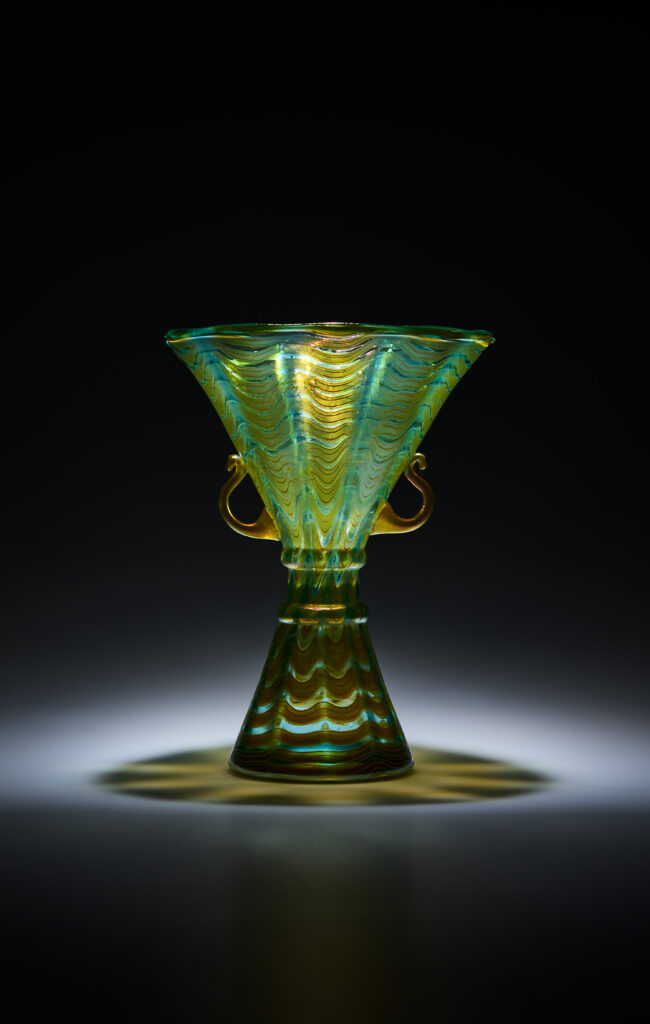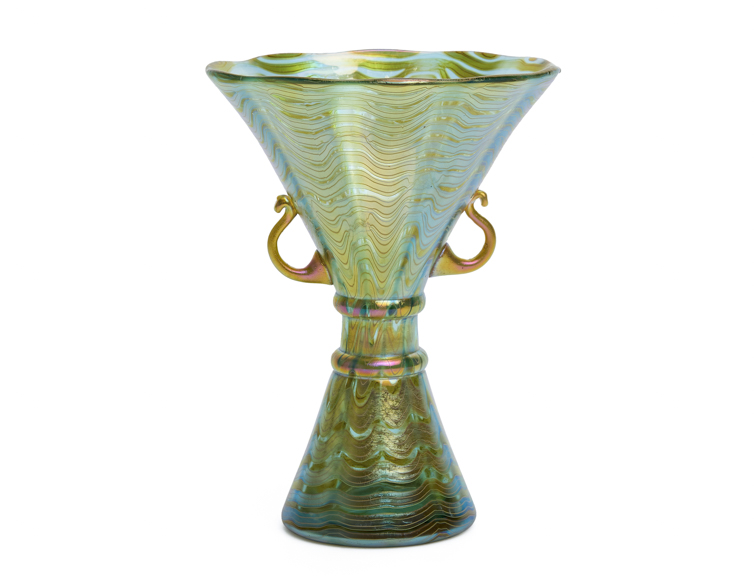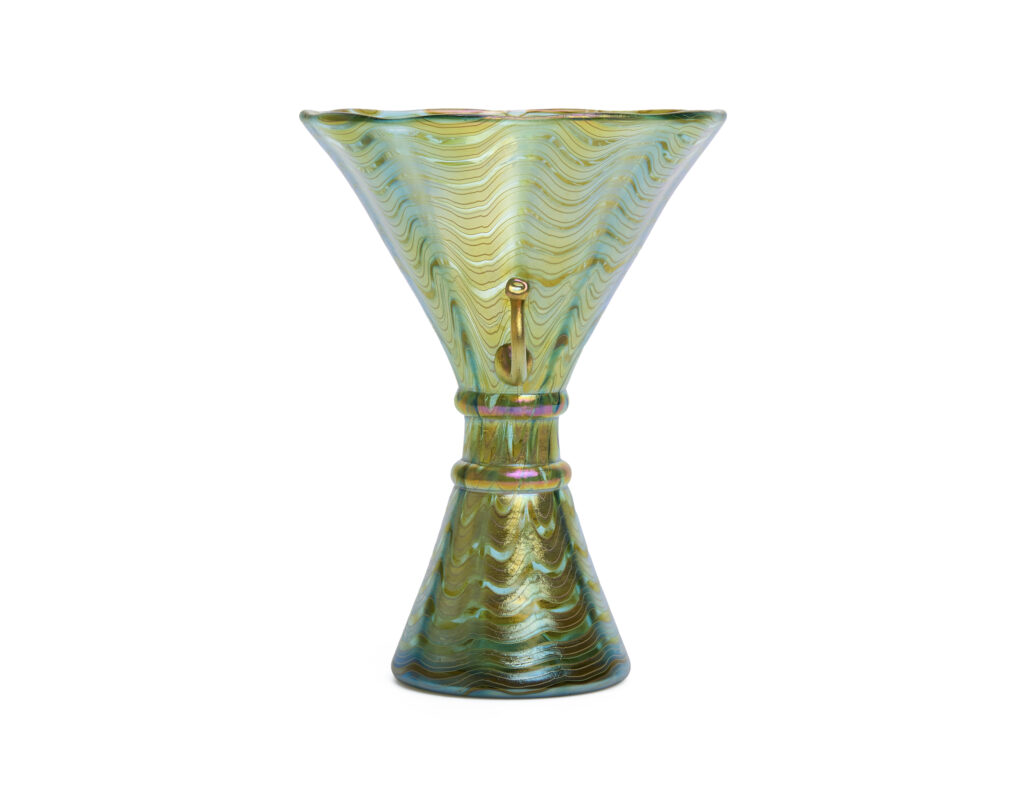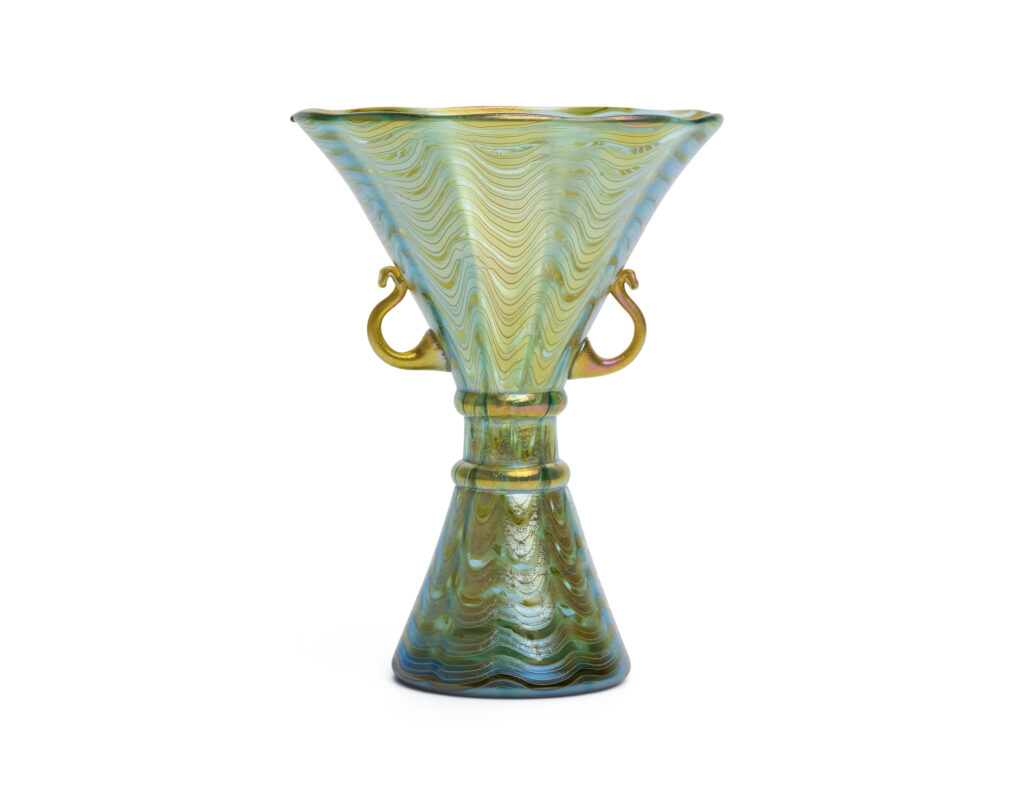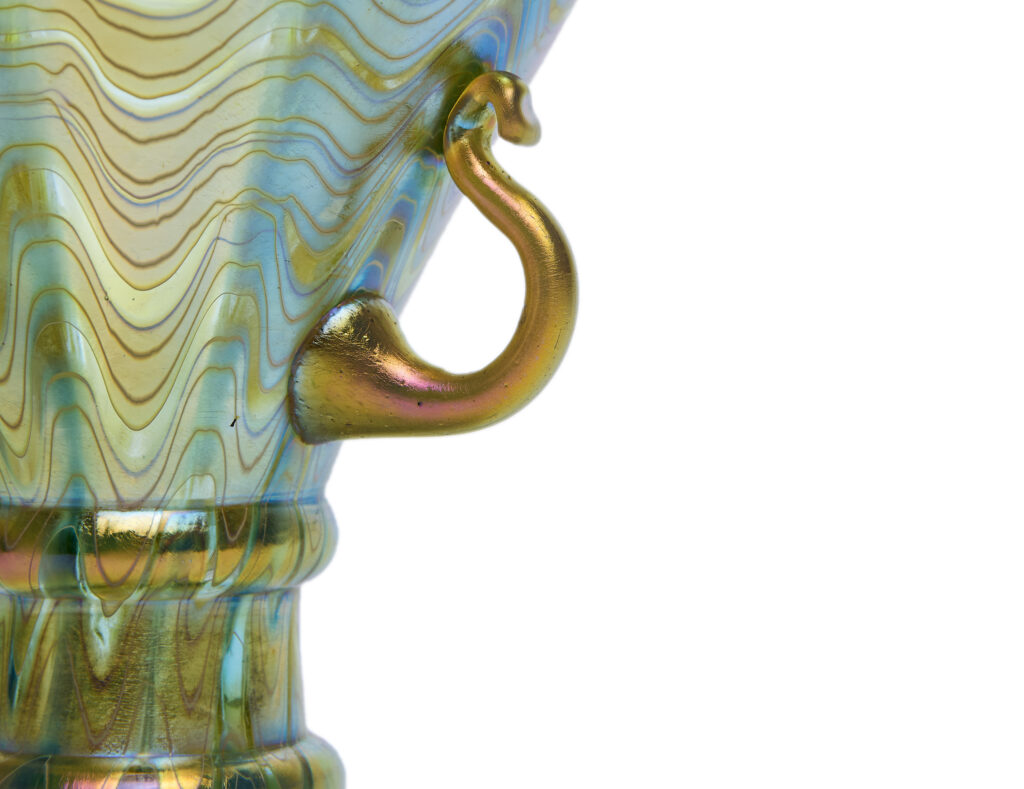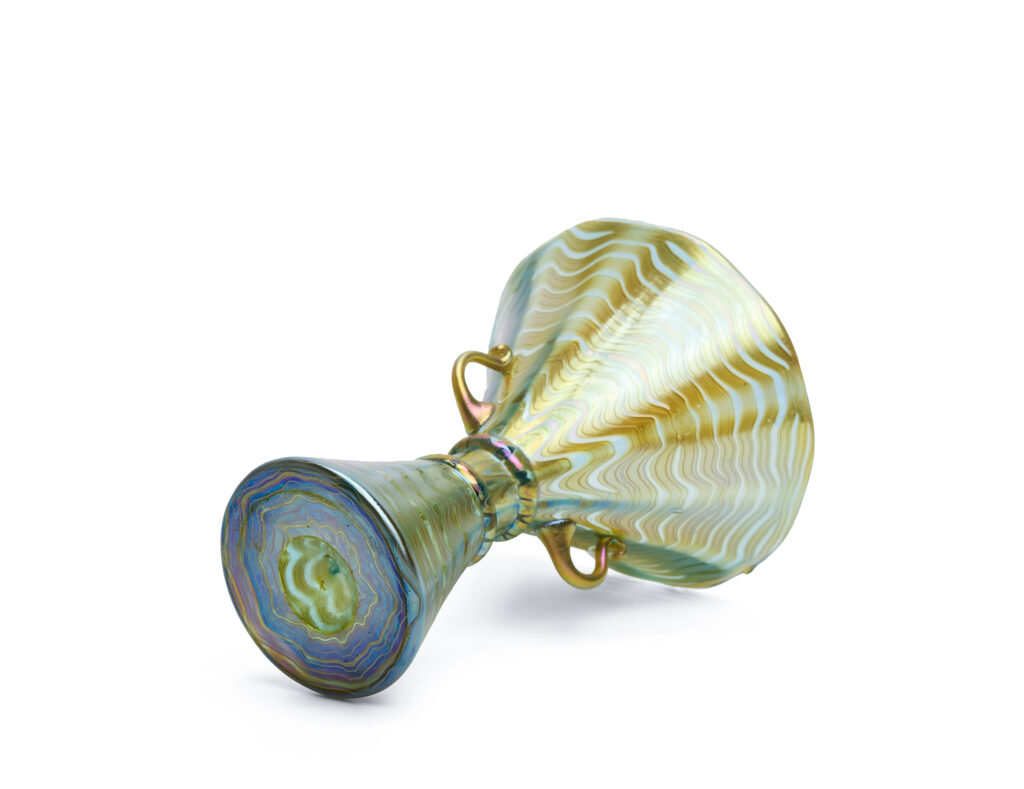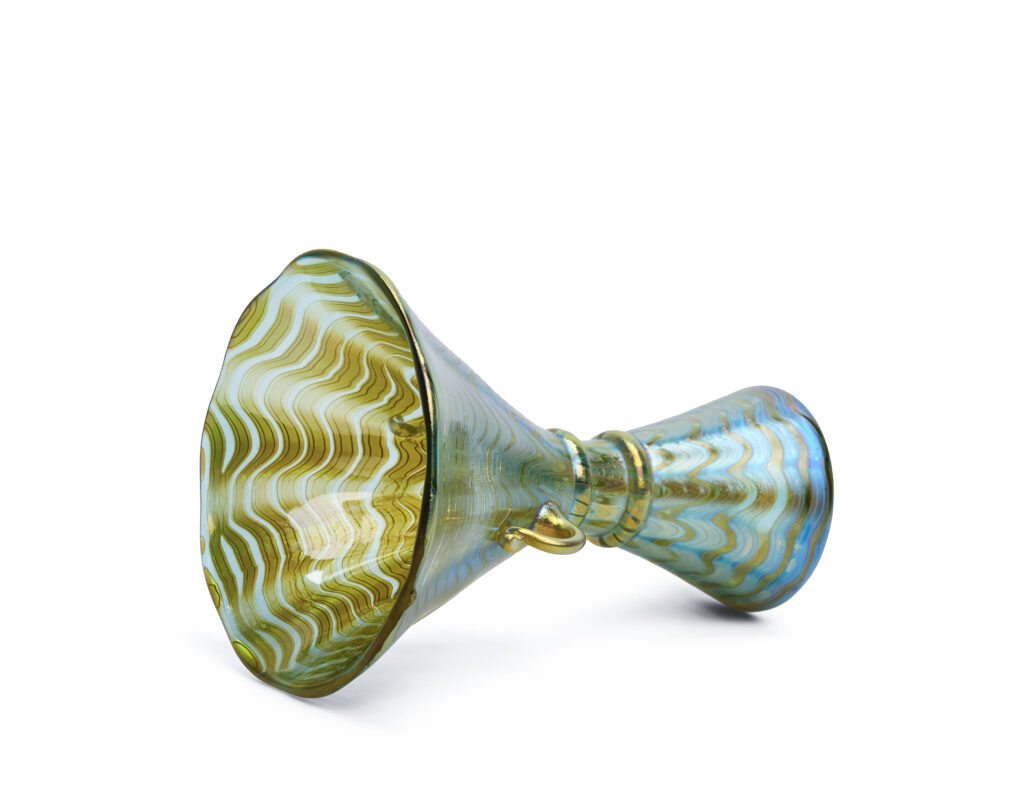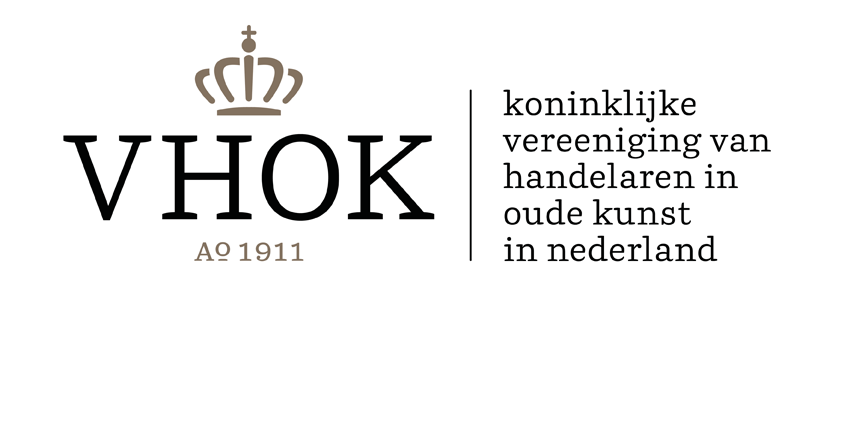Development of Iridescent Glass
The introduction of the Phänomen Genre series by Johann Loetz Witwe marked a revolutionary step in the development of iridescent glass and laid the foundation for the glass manufactory’s worldwide success. In the early years of this innovative technique, Loetz experimented with complex decorative patterns and iridescence effects, resulting in an entirely new aesthetic within glass art. These groundbreaking innovations earned Loetz international recognition in 1900, crowned with a gold medal at the Paris Exposition Universelle.
Phänomen Genre 6893 – Mountain blue
This exceptional Art Nouveau vase, crafted in 1900, is a perfect example of Loetz’s innovative craftsmanship. The vase is blown in shape number Series II 323, an extremely modern form derived from Series I 6652, a model that was designed as early as 1896.
The Phänomen Genre 6893 décor is one of the earliest Phänomen Genre designs, introduced in 1898. This decoration showcases Loetz’s early experiments with iridescence and fused glass patterns, which played a decisive role in the success of their designs.
The diabolo shape of the vase is accentuated by the flowing glass trails of Phänomen Genre 6893, creating a dynamic and fluid effect. The ground color, Mountain blue (Bergblau), is exceptionally light and transparent. In combination with the fused iridescent glass trails, the vase takes on an even more artistic and ultra-modern appearance. The two applied handles, crafted from Candia glass, are highly iridescent due to the application of Silberiris, adding to the vibrant luminosity and refinement of the piece.
Price: This item has been sold.
Interested in a similar item? Please click here to send us a message using the contact form.
